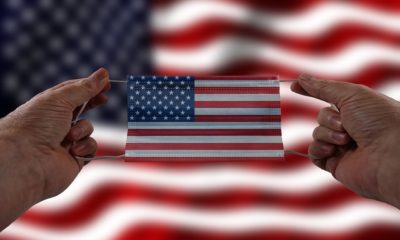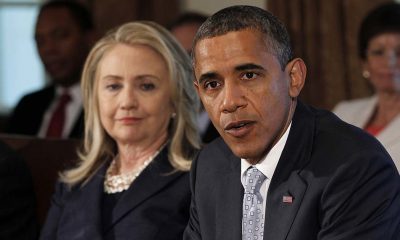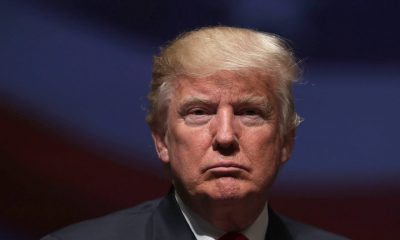World
Cuba’s reopened embassy in US to fly original vintage flag

Havana/Washington: The Cuban government is preparing to reopen its embassy in Washington on Monday with the original Cuban flag that was taken down in 1961, when the two nations cut off ties.
In a move heavy with symbolism, the flag to be raised during the inauguration ceremony is the one that was lowered on January 3, 1961, when the Cuban diplomatic mission in the US closed, as per reported.
The national standard was brought back to Cuba and preserved by historian Eusebio Leal Spengler. The scholar will be among the 30 Cuban citizens invited to the embassy opening ceremony on Monday.
Cuba and the US will reopen their respective embassies as part of their recent agreement to restore diplomatic ties.
The agreement placed the two countries on the path toward the normalization of relations, and during the process the the two sides have to use political wisdom so as to find solutions to problems that have accumulated in the last 50-plus years, Cuban President Raul Castro said Wednesday in a speech to legislators.
Cuba’s historic flag will again fly atop the nearly 100-year-old neoclassical mansion in the Adams Morgan district of Washington that has housed Cuba’s Interests Section, basically a pared-down embassy then President Fidel Castro and his US counterpart Jimmy Carter agreed to establishing in the late 1970s in lieu of embassies.
The mansion was built in 1916 during the government of then Cuban President Mario Garcia Menocal (1913-21) to serve as the Legation of the Republic of Cuba, a type of diplomatic mission headed by a lower ranking representative than an ambassador.
The first Cuban diplomat who headed the legation was Carlos Manuel de Cespedes Quesada, son of Carlos Manuel de Cespedes, known as the “Father of the Cuban Homeland”.
Cespedes Quesada hired local architectural firm MacNeil and MacNeil to construct the French-style mansion described by the National Register of Historic Places in the US as “one of the most imposing and enigmatic residences” in the US capital.
The three-story limestone building features an impressive facade with two towers, and an inner marble staircase topped by a cupola with beautiful stained glass.
On the main floor, six side doors leading to offices each display the shield of one of the six original provinces of Cuba: Pinar del Rio, Havana, Matanzas, Santa Clara, Camaguey and Oriente.
Since 2011, the top floor houses an intimate bar, accessible by invitation only, which bears the name of the US author Ernest Hemingway, who lived in Cuba.
The legation was turned into an embassy in 1923, during the administration of President Alfredo Zayas (1921-25), and closed briefly in 1952, following a coup that temporarily ousted Fulgencio Batista (1940-44, 1952-59).
It continued to serve as a diplomatic mission until January 1961, when Washington decided to sever ties with Cuba after revolutionary Fidel Castro toppled Batista and came to power.
The mansion did not escape Cold War upheaval. In June 1978 a Cuban right-wing terrorist group, CORU, threw an explosive at the site. The worst attack took place a year later when a similar group, Omega 7, detonated a bomb at the rear of the building.
After US President Barack Obama and Raul Castro announced on December 17, 2014 that they would work to restore diplomatic relations, the house underwent a rapid renovation, which included placing a flagpole to hoist the island’s flag.
World
Lockdowns in China Force Urban Communities to Defy Censorship and Vent Frustration Online

Shanghai’s rich middle class is leading a wave of online dissent over the strict and prolonged lockdowns imposed in various parts of the country. Chinese internet censorship is struggling as patience is wearing thin in many urban centers, coming up with creative forms of online protests.
Social Media Posts Revealing Lockdown Tension in Shanghai
Drawn-out lockdowns are nothing new in China as authorities insist with the nation’s zero-Covid policy since the start of the pandemic. Currently over This time around, however, metropolitan areas like Shanghai are increasingly difficult to keep quiet, given that its more than 25 million residents have seen weeks of total isolation along with food shortages and many other service interruptions.
Dozens of towns and reportedly over 300 million Chinese citizens have been affected by lockdowns of different severity. As expected, urban netizens have been most outspoken over their difficulties by finding creative ways to get around state censorship and bans placed on topics, news comments and spontaneous campaigns.
Shanghai residents have been using mobile proxies and hijacking seemingly unrelated hashtags to talk about healthcare issues, delivery failures and the overall severity of their situation. The “positive energy” that the Chinese government wants to transmit during the recent prolonged series of lockdowns does not come naturally to those counting food supplies and online censors are working hard to filter words, trending topics and undesired social media sharing.
WeChat groups and message threads are under constant monitoring. Posts questioning the zero-Covid approach have been quickly deleted, including by leading Chinese health experts like Dr. Zhong Nanshan. Video footage is soon censored and protests and investigations are quickly made to disappear.
Where this has not worked, officials have exposed banners with warnings and outright threats like “watch your own mouth or face punishment”, while drones have been patrolling the city skies. Yet, if anything, this has led to further tensions and unspoken confrontation with Shanghai’s educated and affluent middle class.
Creative Online Solutions Harnessing Civic Energy
Announcements by Chinese social media that they would be publishing the IP addresses of users who “spread rumors” have not helped either. Tech industry research has shown that much of Asia’s tech-savvy population has a habit of using mobile proxies and other privacy tools, quickly finding workarounds to browse the internet freely and talk to the world about the hottest topics.
The sheer volume of forbidden posts is already a challenge for the very censorship system, experts explain. Unable to track all trending hashtags, state workers overlook topics that speak about the US, Ukraine or other popular news. Linking human rights elsewhere to their situation, Chinese online dissidents establish their informal channels and “hijack” the conversation to share personal or publicly relevant information about the Covid suppression in their town.
Sarcastic and satirical posts still dominate. Others hope to evade the censors by replacing words from famous poems or the national anthem. One thing is certain – social media, when harnessed with the right creativity, has proven its ability to mount pressure on the government in even some of the most strictly controlled tech environments like China.























